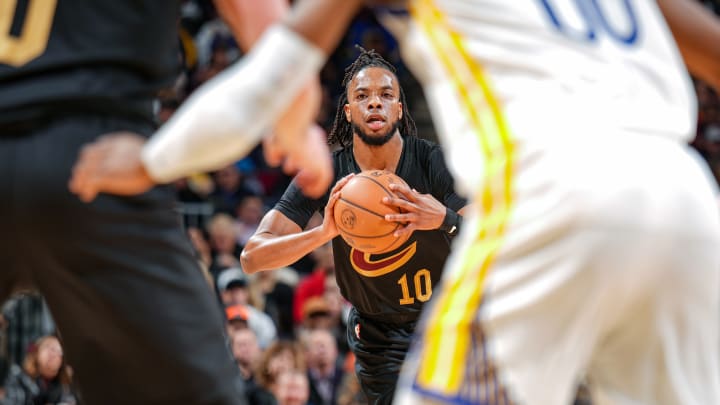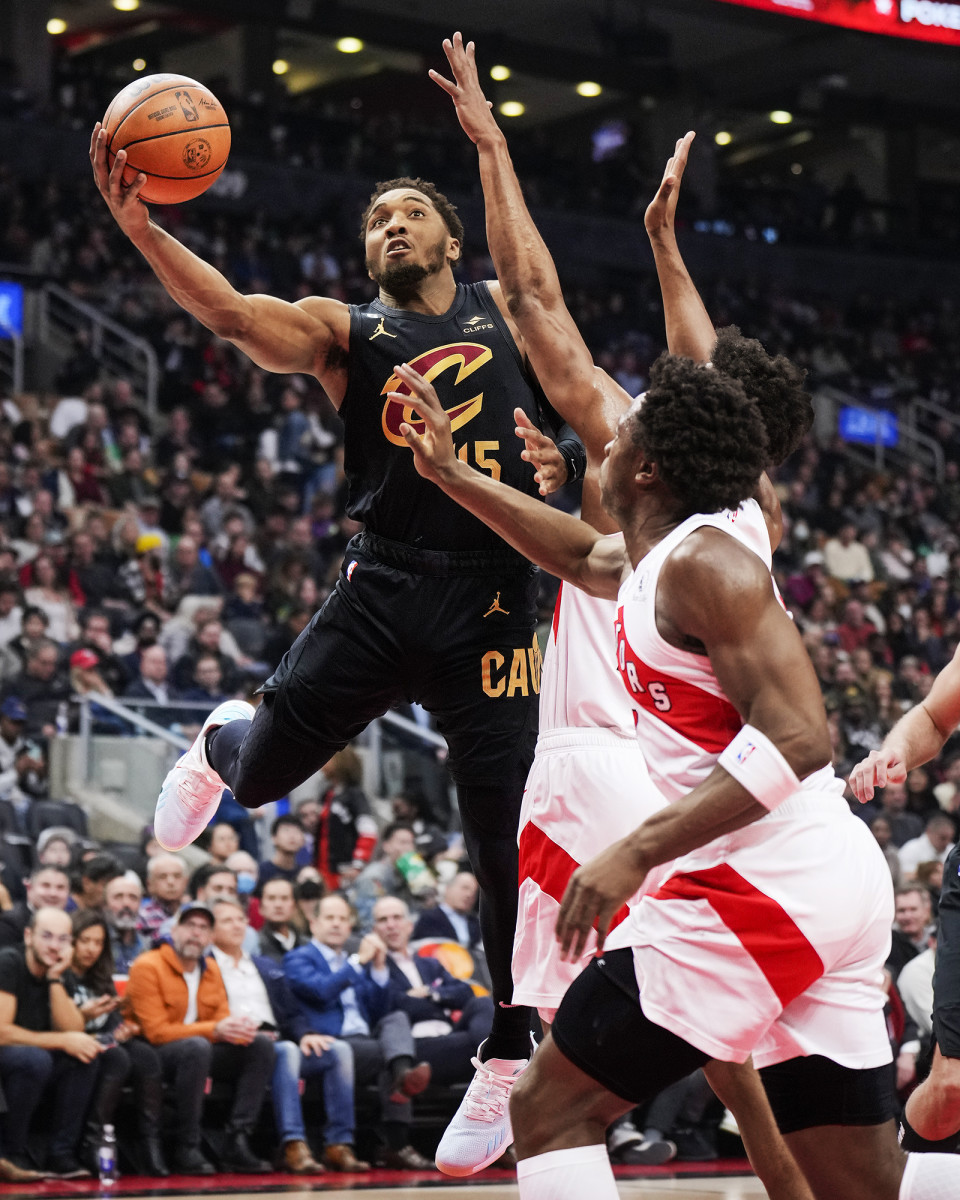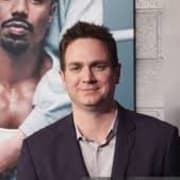Young Cavs Ready to Prove They Don’t Need LeBron to Make Playoff Impact

For two decades, the simplest way to decide whether it was worth buying a ticket to see the Cavs play at home was to glance across the street from the arena. The brick wall on the side of the Sherwin-Williams building in downtown Cleveland has become a beacon of sorts.
In good times—the LeBron years—the space bore various Nike-sponsored images of James. In down times—the non-LeBron years—10-story banners highlighting local landmarks and the Cleveland skyline hung from the wall. But now, five years after James’s second exit, the Cavaliers have built a sustainable winner and his absence—real or poster-sized—no longer hangs over them.
In the aftermath of James’s 2018 departure, the Cavs crumbled. There was no culture, no foundation, just a handful of good players whose skill sets complemented a particularly special one. As a result, says team president Koby Altman, “We fell flat on our face.” A 19-win season in ’18–19 in which coach Ty Lue, who had led the team to its only championship, was fired after six games. Another 19 wins in pandemic-shortened ’19–20, when John Beilein, a 67-year-old college coach with no pro experience, quit after three months. In other words, not a team that appeared on the brink of contention.
But the Cavs had a rebuilding plan. They poured resources into scouting. Into player development. They drafted well. Point guard Darius Garland in 2019. Wing Isaac Okoro in ’20. Big man Evan Mobley in ’21. They made shrewd trades, most notably in January ’21, when Altman horned in on a Nets-Rockets deal, facilitating a James Harden swap—and picking up future All-Star Jarrett Allen while giving up only one first-round pick. Last season, Cleveland finished above .500 in a non-LeBron season for the first time since 1998, positioning the Cavs as a piece away from contending.
Donovan Mitchell was it.
Last spring, Altman wasn’t looking to shake things up. He was satisfied with the team’s season, one that would have been better if not for a string of injuries in the second half. Then in July, Utah traded center Rudy Gobert, one of its two stars, to the Timberwolves for a package that included four first-round picks.
Altman made a call. Was there a deal for the other star? Utah’s asking price for Mitchell was steep. The competition, which included New York and Miami, was fierce. Altman made it clear three players—Garland, Mobley and Allen—were off limits. Talks stalled. In late August the Cavs bowed out. On Sept. 1, the Knicks signed RJ Barrett to an extension, complicating New York’s bid. Altman called back. Was there a deal? The two teams swapped proposals. On Sept. 3, Mitchell was traded to Cleveland. “We just hung around and hung around and hung around,” Altman says. “When they decided to pivot, we were there.”
It worked out, and the Cavs’ timing couldn’t have been better. The franchise was assembling its best collection of talent in years just as the NBA title race was becoming more wide open than ever. Mitchell is an All-NBA candidate, and Cleveland finished the season with the NBA’s sixth-best record, and is set to take on New York in the first round of the playoffs (Game 1 on Saturday, 6 p.m. ET). History suggests that for a group of largely inexperienced 20-somethings, that’s the ceiling. Or is it?
Watch the NBA with fuboTV. Start your free trial today.
The Cavs have a pair of seven-footers patrolling the paint and a collection of interchangeable wings to play alongside them. They have a dynamic playmaker in Garland and a proven playoff scorer in Mitchell. And coach J.B. Bickerstaff has leaned into a grind-it-out philosophy: During the regular season, the Cavs were first in the NBA in defense and last in pace. Last September, Altman spoke of the “long runway” for this group. Can a team with the NBA’s second-youngest starting lineup (average age: 23.2) make it shorter?

The NBA is a yearlong whirlwind of transactions, but few have worked out as well as the Cavs’ deal to land Mitchell. He has supercharged the offense while operating with a career-best efficiency. Fears that he would weaken a sturdy defense have been unfounded. This season, the Cavs had a net rating (+5.6) more than three points better than last season.
In the locker room, Mitchell has taken a leadership role without forcing things on one of the NBA’s youngest rosters. “Don likes to pull guys aside,” says Garland. “He’s going to show you the film. He’s going to show you where we messed up and where we could fix it.”
Mitchell has been reenergized in Cleveland. “I’m having fun,” says Mitchell. “And I have a greater appreciation for the little stuff. I think I got away from that.”
Indeed, the end in Utah was difficult. The COVID-19-shortened season. The fallout with Gobert. Last season was plagued by a string of blown leads and a lifeless defensive effort against Dallas in the playoffs.
“It haunts you,” says Mitchell. “We were so talented. There were things we didn’t accomplish, but I think it’s a great learning lesson. I didn’t play well. But I appreciate it because it’s helped me grow to be the player that I know I can be.”
Bickerstaff is among Cleveland’s success stories. A three-time interim coach, he found a fit in Cleveland after taking over for Beilein. Bickerstaff loved Lauri Markkanen, part of Cleveland’s plus-sized front line that formed the backbone of last season’s top-five defense. But he knew the team needed another playmaker.
“Last year Darius had to do 90% of the ballhandling,” says Bickerstaff. “Teams could shift their defense to one side of the floor, depending on where he was. This year you’ve got such a dual threat from the perimeter and ballhandling position that they can’t pick a side to shrink. Defenses have to make tough decisions, which creates a ton of space for both of those guys to make plays.”
Before the trade, Mitchell and Garland were friendly. They shared a trainer, even worked out together. Unbeknownst to Mitchell, Garland was studying him. “In my head I just thought if we had another scoring guard like him, we would be crazy good,” says Garland. When the deal went down, Garland spent hours studying Jazz film, anticipating ways they could work together.
In training camp, Bickerstaff made sure that in every scrimmage, Mitchell and Garland played together. “I didn’t want it to become a ‘my turn, your turn’ type of thing,” says Bickerstaff.
“I wanted them to be together as much as they could.” From afar, Bickerstaff admired Mitchell’s talent. But, he admits, he didn’t fully understand it. “When you watch him and prepare for him, you see him as a scorer,” says Bickerstaff. “But in reality he is a lead guard. He has the ability to orchestrate and he has the empathy to understand what his teammates need. He’s not a combo guard or a two guard. He is a point guard with the ability to score at a high level.”
There were defensive concerns. Markkanen’s exit left a hole, and Mitchell—coming off a disastrous series against the Mavs—didn’t exactly inspire confidence. For months Mitchell absorbed the criticism of his defense. “You can stay off your phone as much as you can, but you hear it,” says Mitchell. He arrived in Cleveland, to a team building around a sturdy defense, determined to shake it. He watched the Dallas series three times. Maybe four. “Piss-poor performance,” says Mitchell. He put in extra work on closeouts. Conversations with Garland turned to ways to push the Cavs’ backcourt into the elite.
“We call ourselves first-team All-Defense,” says Garland.
In Utah, Mitchell was backstopped by a premier shot blocker. In Cleveland, he has two (Allen and Mobley), though his mindset has been to make them more a luxury than a need. “The level I was getting beat at last year, I wasn’t proud of,” says Mitchell. “This was a great defensive team. I didn’t want to let anybody down.”
Defense, the Cavs believe, will give them a shot at a deep postseason run. Since 2000, only three teams that finished with the NBA’s top defensive rating have failed to advance past the first round. Offensively, Cleveland’s grinding pace should translate to the playoffs. Should. The Cavs have 317 games of combined postseason experience, but Mitchell (39) and midseason signee Danny Green (165) make up most of it. When the team reconvened after the All-Star break, Bickerstaff’s message was simple: It’s not talent that stands in the way of playoff success. It’s mental toughness.
“How quickly can we learn from our experiences?” he says. “We feel like we can beat anybody on any given night. But the teams in front of us have taken the lumps that they have had to take to learn to win at a high level.”
As for the Cavs, who haven’t won at a high level—or any level for that matter—since a certain poster subject left town, they know those lumps are coming. It’s just a question of how they can adjust. On Saturday, when they open the postseason against New York, they will find out. “As quickly as we learn,” says Bickerstaff, “is as far as we’ll go.”
